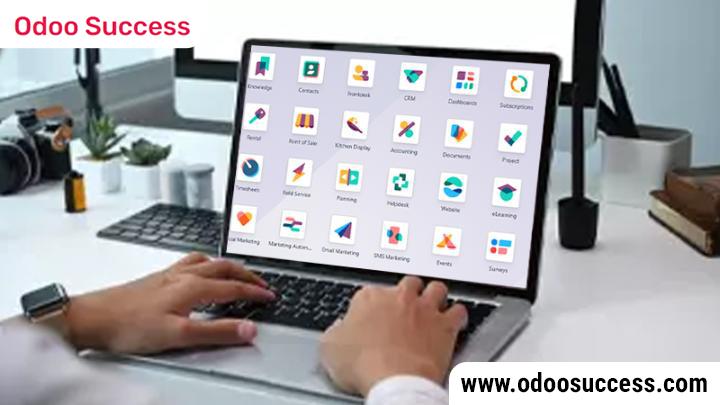A Comprehensive Guide to Odoo Customization Success
We live in a time of unprecedented rapidity and change in the digital economy. Businesses are working hard to find ways to run operations more efficiently, and a key step is identifying a flexible, customizable platform. Officers are stretched thin, juggling many obligations, from accounting to inventory, from customer relationship management (CRM) to project tracking. Companies want a single platform, or software solution, that can be tailored to fit their specific needs. This is where Odoo can help, with a robust open-source enterprise resource planning (ERP) platform that offers a great deal of flexibility and scalability.
However, not all businesses are the same. Off-the-shelf software solutions often do not match perfectly with the workflows, compliance requirements, business processes, or industry-specific features of a company. This is the point at which Odoo customization can be a real game-changer for business success.
In this post, we'll cover what Odoo customization is, the role of successful Odoo customization, keys to outsmarting a custom Odoo implementation, Odoo common customization pitfalls to avoid, and how to leverage new customized applications for long-term ROI (return on investment). Whether you're just beginning your journey of learning how to get up and running on Odoo or you're currently immersed in an implementation effort, there is something in this post for you that lays the foundation for successful Odoo customization.

What Is Odoo Customization?
Odoo is designed with a modular architecture that allows for flexibility and adaptation for many different use cases. Customization in Odoo involves making adjustments to core modules (Sales, CRM, Inventory, H.R., etc.) or creating entirely new modules based on your organization's specific needs.
Overall, there are three levels of customization:
- UI/UX Customization - adjusting the user interface for user friendliness.
- Workflow Customization - Altering or automating business logic to fit organizational workflows.
- Module Development - creating features or apps that would not otherwise exist in Odoo.
Odoo's flexibility and extensibility are very attractive, but with that flexibility comes the responsibility of planning and technical abilities.
Why Customization Is Critical
The following are some situations where Odoo customization is not just helpful but necessary:
Industry Particularities
Each industry has its own workflows and operational characteristics. For example, a retail organization may need a POS system, while a manufacturer may need a modified bill of materials to keep pace with its methods of production. Odoo customization can help match the software to these particular requirements, with improvements on functionality and accuracy.
Regulations
Compliance requirements vary significantly by geography and industry. Different countries have specific tax requirements, invoicing rules, pay structure, and HR requirements. Organizations can customize Odoo to help meet these myriad legal requirements, thereby lowering risk and creating a seamless process in different geographies.
Increased Efficiency
Odoo customizations can automate repeating, time-consuming tasks or integrate with older legacy systems that are still in operation. Resultantly, organizational efficiency and productivity can increase, while human error and operational bottlenecks can decrease, thereby allowing your team to dedicate more time to work that adds value.
User Acceptance
The level of acceptance and ease of use of software depends heavily on how intuitive and relevant it feels to the end user. When Odoo is modified to be in line with users' existing workflows and terminology, they will generally find it easier to learn and use. Ultimately, this will ease the onboarding process and increase overall satisfaction with the system.
The aim is not to change your business to fit the software, but to customize the software to fit your business.

Key Ingredients of Odoo Customization Success
Odoo customizations are not only a coding exercise - it is a process that requires business analysis, project management, and technical deployment. Below are some pillars worth focusing on:
1. Clear Requirement Gathering
Make a real effort to understand your current business processes. Look for bottlenecks, redundant business processes, and opportunities for automation. Visit end users to understand their pain points and needs. All of this will help map accurate customization.
2. Select the Right Implementation and Customization Partner
One of the major factors contributing to the success of Odoo customization is the implementation partner you choose. A good implementation partner will need to have not only technical skills but also domain-specific knowledge to enable them to offer a better solution.
The right partner should demonstrate:
- Case studies or client reviews
- Clearly defined communications and project Management processes
Common Mistakes to Avoid
Customization can be a great tool, but using it inappropriately can create technical debt or something worse. Here are several common traps to avoid:
1. Customizing Too Much
Trying to customize everything creates a brittle system that is difficult to maintain. Only customize on a clear business need.
2. Customization that is not Upgradable
Customizations often break after a version upgrade, because of poor design. Follow Odoo's recommended practices and modular design principles to ensure your implementation is upgradable in the future.
3. No Version Control
Always work in a version control system (e.g., Git) for code changes, as nothing is worse than finding out after a change that the code you are looking at is not the exact code version currently being run. Version control allows you to roll back certain changes easily and share changes with your development team.
4. Poor Documentation
Future developers (or even your future self) cannot figure out from looking at the code why you do certain customizations.

Ensuring Long-Term Success
Customization isn't only for after go-live; for long-term success with your Odoo customizations, consider the following:
1.Regular Maintenance
Monitor the system for performance and pre-emptively fix bugs.
2.Upgrade Strategy
Have a plan for upgrades at least annually and test all customizations thoroughly before moving to production.
3.Feedback Loop
Continue to collect user feedback and look for opportunities to improve the system over time.
The businesses that gain the most from Odoo treat it as a living platform that grows with their organization.
Conclusion
Odoo is an extremely powerful platform, but thoughtful and strategic customizations unlock its full power. With clear planning, expert development, and continued support, your organization can achieve meaningful and measurable Odoo customization success. The key is to customize the system to your needs while ensuring it's scalable and upgradable.
If you are ready to start or refine your Odoo journey, be sure to work with the right team.
At OdooSuccess.com, we help companies just like yours traverse the road to Odoo customization success. From analyzing requirements to deployment and support, our team has experience, depth of technical knowledge, and a track record of success. Reach out to us today and let's make your success story together.
Frequently Asked Questions
1. What does Odoo customization entail?
Odoo customization pertains to altering the pre-existing Odoo modules or creating brand new modules to better customize the platform to fit your particular business processes, workflows, rules, or user interface needs. Customization varies widely from adding additional fields to forms to building completely new applications within Odoo.
2. How long does it take to complete a typical Odoo customization project?
It depends on the complexity of the project. Simple UI changes may only take a few days, while a large project that involves multiple modules and integrations may take several weeks or months. A project that conducts proper requirement analysis from the beginning usually allows for a realistic timeline estimation.
3. Will customization impact my ability to upgrade Odoo in the future?
Yes, but if you don't do it right. Bad customizations will typically break on an Odoo upgrade. To ensure you don't need to eat any of that customization cost and have issues when upgrading, you must follow best practices through things like creating your custom modules instead of modifying core code, taking note of all changes you make, and working with an experienced Odoo partner whom you trust to maintain upgradability.
4. Can I do the Odoo customizations myself, or do I need to hire a developer?
Basic configurations and UI modifications can be completed with the built-in tools provided via Odoo, but all advanced customizations like creating new modules, integrating 3rd party systems, and changing backend logic will require knowledge of Python, XML, and the Odoo framework in order to accomplish. In those cases, we always suggest hiring an experienced developer or a team of developers.
5. How do I know if my Odoo customization is successful?
You can measure success by assessing whether the overall efficiency improved, whether users adopted the changes made, whether errors decreased, and whether it aligned with your business objectives. When recreating the KPIs like processing time, number of automated tasks, or customer satisfaction before Odoo customizations were implemented or after going live, you can get a rough idea of the ROI.